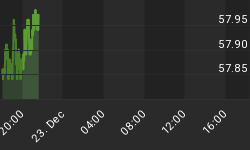The interesting part of growing older, that my wife and I have noticed, is the appearance that time speeds up. As each month that passes turns into years, as a 60+-year-old I'm feeling the passage of time quite differently than a child would; a year to me feels more like a month, whereas a month in a child's life feels like a lifetime. Needless to say, I'm still encouraged to continue my favorite pastime of tracking the fluctuations in the cost of living, and my fascination with prices and values has not waned one bit. Also, my wife's frugalness and aversion to throwing food away has made me very curious about commodity prices, so recently I did some research and discovered the facts weren't pretty. Below are some Commodity Price increases over the past year:
Commodity Price % Increases
Year over Year
| Agricultural Raw Materials | 24% |
| Industrial Inputs Index | 25% |
| Metals Price Index | 26% |
| Coffee | 45% | Barley | 32% |
| Oranges | 35% |
| Beef | 23% |
| Pork | 68% |
| Salmon | 30% |
| Sugar | 24% | Wool | 20% |
| Cotton | 40% |
| Palm Oil | 26% | Hides | 25% |
| Rubber | 62% |
| Iron Ore | 103% |
Yep, looking at key raw material prices compared to last year, the recession is over. These prices are getting loaded into the system now and will flow through to the consumer in higher prices to come at the supermarket and elsewhere.
But it's not just raw materials soaring; it's everything. One example is my health insurance bill that came with the usual 20 percent annual increase. With Obamacare starting to take effect, insurance companies are rushing to push in price increases to cover expanded care and no caps on total payouts. Airline fares are already up 14 percent from last year, and if you plan to book a flight over the holidays, the rates have been jacked up to total price gouging levels. Don't believe the Wall Street hype, either, about being consumer-friendly and adding efficiency when it comes to the announced mergers of United and Continental Airlines, Southwest and AirTran, and Hertz and Avis bidding for Dollar Thrifty. The real reason mergers are done is to cut workers, destroy competition, and stick it to the consumer with higher prices, while Wall Street reaps huge profits.
Expect the prices at supercenter retail stores to increase as well. Wal-Mart, as one example, grew so large and great by blowing up small stores on Main Street, along with our American factories, which were moved to China to take advantage of cheap labor. Wal-Mart and other superstores have effectively become storefronts for China, Inc. However, given labor unrest in China, major Chinese manufacturers have caved in and given their workers 20 percent wage hikes. The days of cheap Chinese labor are fading. Worst yet, for consumer prices, it actually looks like our government has made a conscious decision to throw the dollar under the bus and go for a 20 - 40 percent dollar devaluation against the Yuan to try and boost exports, limit imports, and create American jobs. Moreover, with higher wages and a higher currency, those 1.3 billion hungry Chinese will be better positioned to bid in the world for oil, wheat, and pork bellies. So, the likely trend for commodity demand will be up in a world where the Russian wheat crop failed, and the world's coffee and cotton crops were duds.
As our government officials continue to scare us with a phony deflation scare, the Federal Reserve is geared up for QE II, and it looks like we may be willing to get tough with China to force its currency up. Moreover, America is not the only country with a central bank that prints money to try and hold the exchange value of their currency down. England, Japan, Korea, Switzerland, and Brazil have all used a version of central bank money printing. Rising commodity prices, a rising Chinese currency, and a world money supply - growing at double digits in a world where output is hardly growing at all - are all the ingredients needed in a recipe for a very potent inflationary cocktail.
If you're getting older like me and notice time speeding up, the next ten years will pass quickly. At the rate we're going - in terms of world money printing and federal deficits - I honestly expect the cost of buying the necessities of life, such as food and energy, will double over the next decade. A doubling of prices is the order of magnitude that is necessary to rebalance the world economy and make the bad debts in the credit system manageable. It seems to me that the biggest losers are going to be those who have to spend the greatest portion of their income on the necessities of life, including the 41 million people on food stamps, and the 60 million receiving Social Security. Because so many of us will suffer, take heed if you live in the suburbs; at least you can start a Victory garden.
In looking back, I don't know if I was smarter than I thought or just plain lucky when I bought gold at $350 and $450, and silver at $4.5, and $12.40, I just wish I had more fiat dollars so I could trade them for real tangible assets at today's current prices. I figure if I have tangible assets like gold in the future, no matter what the world central banks set the price level at, I'll be able to trade my gold for the necessities I need to live. If prices for goods stay the same, double, or triple I won't care because it's all the same to me: gold and silver will follow the government-created inflation wherever it goes!
















